Free E-Mail
Bible Studies
Beginning the Journey (for new Christians). en Español
Old Testament
Abraham
Jacob
Moses
Joshua
Gideon
David, Life of
Elijah
Psalms
Songs of Ascent
(Ps 120-135)
Isaiah
Advent/Messianic Scriptures
Daniel
Rebuild & Renew: Post-Exilic Books
Gospels
Christmas Incarnation
(Mt, Lk)
Sermon on the Mount
(Mt 5-7)
Mark
Luke's
Gospel
John's Gospel
7 Last Words of Christ
Parables
Jesus and the Kingdom
Resurrection
Acts
The Early Church
(Acts 1-12)
Apostle Paul
(Acts 12-28)
Paul's Epistles
Christ Powered Life (Rom 5-8)
1 Corinthians
2 Corinthians
Galatians
Ephesians
Vision for Church
(Eph)
Philippians
Colossians,
Philemon
1
& 2 Thessalonians
1 & 2 Timothy,
Titus
General Epistles
Hebrews
James
1 Peter
2 Peter, Jude
1, 2, and 3 John
Revelation
Revelation
Conquering Lamb of Revelation
Topical
Glorious Kingdom, The
Grace
Great Prayers
Holy Spirit, Disciple's Guide
Lamb of God
Listening for God's Voice
Lord's Supper
Names of God
Names of Jesus
Christian Art
About Us
Speaking
Contact Us
Dr. Wilson's Books
Donations
Watercolors
Sitemap
Psalms in Worship
throughout the Centuries
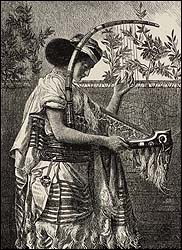 Simeon Solomon (1840-1905), "Hosanna" (1881), engraved by the Brothers Dalziel. Larger image. |
For thousands of years the Psalter has been a wonderful resource to enrich a person's spirit, both in public worship and in the believer's private devotional life.
Beginning with David
Though Hebrew poetry predates the time of David, he seems to be the first person we know to use psalms devotionally. Seventy-three psalms are attributed to David, an extremely prolific poet and musician. He is known as "the sweet psalmist of Israel" (2 Samuel 23:1). I have no doubt that under the inspiration and guidance of the Spirit he composed psalms as a shepherd, on the run from Saul, and later as king. Throughout his life he would sing and compose, and in the process rejoice in his God.
Psalms in Temple Worship
David established orders of musicians and singers to bring regular organized worship before the tent in Jerusalem which David had pitched for the ark of God. First Chronicles tells us:
"Kenaniah the head Levite was in charge of the singing; that was his responsibility because he was skillful at it...." (1 Chronicles 15:22)
"He appointed some of the Levites to minister before the ark of the LORD, to make petition, to give thanks, and to praise the LORD, the God of Israel: Asaph was the chief, Zechariah second, then Jeiel .... They were to play the lyres and harps, Asaph was to sound the cymbals, and Benaiah and Jahaziel the priests were to blow the trumpets regularly before the ark of the covenant of God. That day David first committed to Asaph and his associates this psalm of thanks to the LORD...." (1 Chronicles 16:4-7)
This passage is followed by a psalm that presumably David had written for the occasion (1 Chronicles 16:8-36), parts of which are found in our Psalter -- Psalm 105:1-15; Psalm 94 and Psalm 106:1, 47, and 48).
"David left Asaph and his associates before the ark of the covenant of the LORD to minister there regularly, according to each day's requirements. He also left Obed-Edom and his sixty-eight associates to minister with them." (1 Chronicles 16:37-38)
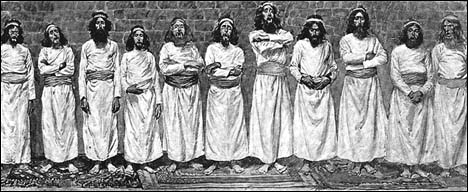
Temple Singers.
J.J. Tissot, "The Choristers" (1896-1900), b/w image of watercolor.
Larger image.
By Jesus' day, Alfred Edersheim explains how psalm-singing in the Second Temple services followed the morning sacrifice:
"The Levites, accompanied by instrumental music, began the Psalm of the day. It was sustained by no less than twelve voices, with which mingled the delicious treble from selected voices of young sons of the Levites, who, standing by their fathers, might take part in this service alone....
The psalm of the day was always sung in three sections. At the close of each the priests drew three blasts from their silver trumpets and the people bowed down and worshipped. This closed the morning service."1
Psalms were sung in a particular pattern in the daily temple service:2
|
Sunday: |
Psalm 24 Psalm 48 Psalm 82 Psalm 94 |
Thursday: |
Psalm 81 Psalm 93 Psalm 92 |
Special psalms were prepared for the new month, and other occasions, the Hallel during major Jewish holidays, and psalms for special sacrifices such as the "Psalm for the Thanksgiving Offering" (Psalm 100).
Psalms in the Synagogue
Though evidence is scanty, scholars believe that the institution of the Jewish synagogue developed during the exile, when worship at the temple was no longer possible. Even after the temple was built following the exile -- and rebuilt by Herod -- synagogues flourished, even in Jerusalem, the city of the temple itself (Acts 6:9). At the destruction of Jerusalem, some 400 to 500 synagogues were found in the city.3 A synagogue could be formed by as few as ten males. The synagogue was the local house of worship. Jesus attended the synagogue regularly (Luke 4:16) and taught in synagogues up and down Galilee.
What was worship like in the synagogues of this era? They were devoted to prayer and the reading of the scripture. We have a number of indications that the Jews used psalms regularly on feast days as well as in their synagogue worship. George Foot Moore postulates:
"It would seem natural that with other features of the temple worship, the songs of the Levites at the morning and evening sacrifices should be imitated in the synagogue. The first group of psalms to be so employed was Psalms 145-150; but it appears that in the middle of the second century AD, the daily repetition of the psalms was a pious practice of individuals rather than a regular observance of the congregation."4
The Passover ritual, too, drew heavily on the Psalms. The "hymn" sung by Jesus and the apostles at the conclusion of the Lord's Supper (Matthew 26:30) on the night of Passover was doubtless one the psalms prescribed for the occasion -- the second half of the Hallel (Psalms 114-118 or 115-118).5
From Synagogue to House Church
Early Christianity was practiced in the temple and in the homes of believers (Acts 2:46). When the Apostle Paul would take the Gospel to a new city, he would typically begin by attending the local synagogue and teaching there about Jesus. Eventually, the Christians would be driven out of the synagogues and formed their own congregations, which were essentially Christian synagogues governed by elders (Acts 14:23). We have several passages of scripture, which indicate that psalms were part of the worship in these early house churches:
"When you come together, everyone has a hymn, or a word of instruction, a revelation, a tongue or an interpretation. All of these must be done for the strengthening of the church." (1 Corinthians 14:26)
"Be filled with the Spirit. Speak to one another with psalms, hymns and spiritual songs." (Ephesians 5:18b-19a)
"Let the word of Christ dwell in you richly as you teach and admonish one another with all wisdom, and as you sing psalms, hymns and spiritual songs with gratitude in your hearts to God." (Colossians 3:16)
"Is any one of you in trouble? He should pray. Is anyone happy? Let him sing songs of praise." (James 5:13)
The Post-Apostolic Church
After the original apostles died, psalms continued as part of the worship of the church. Tertullian (c. 160-225 AD) mentions singing songs from the scripture as part of the Lord's Supper celebration.6 Church historian Arthur McGiffert notes,
"In the church of Rome nothing except the Psalms and New Testament hymns (such as the Gloria in Excelsis, the Magnificat, the Nunc Dimittis, etc.) was, as a rule, sung in public worship before the fourth century."7
St. Jerome (c. 348-420 AD) shares something of the primitive monastic life that was beginning to develop within Christianity:
"In the cottage of Christ [the monastery] all is simple and rustic: and except for the chanting of psalms there is complete silence. Wherever one turns the laborer at his plow sings Alleluia, the toiling mower cheers himself with psalms, and the vine-dresser while he prunes his vine sings one of the songs of David."8
The Liturgy of the Hours
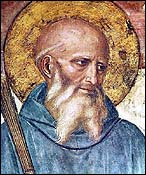 Fra Angelico, detail of St. Benedict"(1439-1445), fresco, Monastery of San Marco, Florence |
While psalms were used in worship services in churches, in the growing monastic movement, the practice of reciting the Psalter formed the core of the devotional practice of the community. St. Benedict (c. 480-543) developed a widely-copied rule for monasteries known as The Rule of St. Benedict (c. 530-540 AD). Among other practices it outlined the Opus Dei, the Divine Office of prayers and psalms. This liturgy consisted of gatherings of the community at eight times during the day and night with the purpose to "sanctify" the day with prayer. At these various times they would say or chant together the set of prayers and psalms designated for that day and time. In time, the Divine Office involved reciting the entire Psalter through in a single week and would require several hours each day to complete. Clergy and most religious orders in both the Roman Catholic Church as well as Eastern Orthodox were -- and are -- required to recite the Divine Office. The best-known example of this is the beautiful Gregorian Chant practiced in certain orders, going back perhaps as far as Pope Gregory (c. 540-604 AD), for which it was named.
At Vatican II in the 1960s, the Roman Church revised the Liturgy of the Hours so that it now goes through the entire Psalter in one month rather than in one week, and reduced the number of required times of prayer each day. Those in the Roman Church that practice this discipline use Breviary, a set of four volumes that contain the one-month Psalter plus the prayers for each day and each feast day.9 Those living as part of a community, such as in a monastery or convent, recite their psalms and prayers together ("in choir") for at least some of services, such as morning and evening prayer. Clergy living alone recite these psalms and prayers by themselves privately.
Other churches with a liturgical tradition, such as Anglican, Episcopal, Lutheran, Presbyterian, Methodist, often have in their prayer book or book of discipline a calendar to guide the faithful in Morning Prayer and Evening Prayer (Vespers).
The effect of those practicing a discipline of the Liturgy of the Hours has been an immersion in the psalms and regular prayer. While it can be seen as a burden, for those who have entered into it wholeheartedly, it can be a lifetime of blessing.
Singing the Psalter
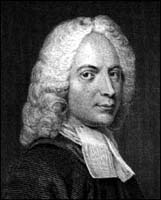 Isaac Watts (1674-1748), engraving by R. Newton J. Thurston. |
Protestant Churches, too, have a strong tradition of singing the Psalms. The Church of England, under heavy Puritan influence, sought to bring about reform by publishing a metrical psalmody that could be sung by a congregation. In 1562 John Day printed the Book of Psalms with psalm text translated by Thomas Sternhold, John Hopkins, and others. Standard metrical patterns were developed that could adapt each of the psalms to a common metrical pattern -- which would then allow the psalm to be sung to one of several standard tunes. Patterns included: Common Meter (8.6.8.6), Short Meter (6.6.8.6), and Long Meter (8.8.8.8). Various adaptations were made in Scotland, New England, etc., but the psalms were the primary focus of singing in many Protestant congregations for hundreds of years.
Isaac Watts (1674-1748) set a new direction for independent or congregational churches when he published his Psalms of David in 1719. Instead of close fitting translations, these hymns were poetic paraphrases of the biblical psalms. The best known of these today are probably "Our God, Our Help in Ages Past" (Psalm 90) and "Joy to the World, the Lord Is Come" (Psalm 98).
The nineteenth and twentieth centuries saw a near eclipse of psalm singing in most Protestant churches in North America, replaced by devotional lyrics and gospel songs with a more emotional and subjective bent.
Late Twentieth Century Psalm Singing
A liturgical renewal following World War II saw a revival of psalm-singing in some churches. Vatican II (1962-65) encouraged the use of psalms in worship and fostered a wealth of "responsorial psalms."
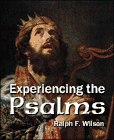 Now all the lessons are available together in e-book and paperback formats. |
The Charismatic Renewal also brought about a huge surge of Christian music. During the 1970s and 1980s especially, singing the scriptures was common in some groups, though contemporary Christian music seems to have moved past that as a whole by the turn of the twenty-first century.
Throughout history the Psalms have often been central in both
corporate worship and personal devotional practice. As the psalms
have remained strong, the church has been revived and personal
spiritual life has been enriched. Isn't it about time to renew
the ancient practice of the Psalms in your congregation and in your
life?
References
- Alfred Edersheim, The Temple: Its Ministry and Services As They Were at the Time of Christ (Eerdmans, reprinted 1960, from the original facsimile published in 1874), p. 172.
- Edersheim, Temple, p. 172, footnote 2, cites Tamid, sec. 7, and Maimonides in Tamid.
- According to one legend, there were 394 synagogues at Jerusalem when the city was destroyed by Titus (Ket. 105), while a second tradition gives the number as 480 (Yer. Meg. 73d et al.). Cited by Wilhelm Bacher and Lewis N. Dembitz, "Synagogue," Jewish Encyclopedia (1906).
- George Foot Moore, Judaism in the First Centuries of the Christian Era: The Age of Tannaim (Hendrickson Publishers; reprinted 1997 from Harvard University Press edition, 1927), vol. 1, p. 296.
- Joachim Jeremias, The Eucharistic Words of Jesus (Oxford: Basil Blackwood, 1955), pp. 30-31, especially fn. 1 on page 31.
- Tertullian, Apology, 39.16. "Each is asked to stand forth and sing, as he can, a hymn to God, either one from the holy Scriptures or one of his own composing...."
- Arthur Cushman McGiffert, The Church History of Eusebius, p. 247, footnote 14, commenting on Eusebius, Church History, 28,5, in A Select Library of Nicene and Post-Nicene Fathers of the Christian Church (Second Series), Philip Schaff and Henry Wace (editors), vol. 1 (1890).
- Jerome, Epistle 46.12.
- Univarsalis (www.universalis.com) contains the Breviary online with all the readings for the Liturgy of the Hours, based on the Roman Breviary 1985 edition, in a four-week cycle of the psalms. Scripture readings are from the Jerusalem Bible. Psalm translations are specially commissioned.
Copyright © 2024, Ralph F. Wilson. <pastor![]() joyfulheart.com> All rights reserved. A single copy of this article is free. Do not put this on a website. See legal, copyright, and reprint information.
joyfulheart.com> All rights reserved. A single copy of this article is free. Do not put this on a website. See legal, copyright, and reprint information.
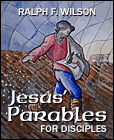 |
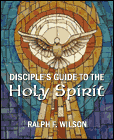
|
In-depth Bible study books
You can purchase one of Dr. Wilson's complete Bible studies in PDF, Kindle, or paperback format -- currently 48 books in the JesusWalk Bible Study Series.
Old Testament
- Abraham, Faith of
- Jacob, Life of
- Moses the Reluctant Leader
- Joshua
- Gideon
- David, Life of
- Elijah
- Psalms
- Solomon
- Songs of Ascent (Psalms 120-134)
- Isaiah
- 28 Advent Scriptures (Messianic)
- Daniel
- Rebuild & Renew: Post-Exilic Books
Gospels
- Christmas Incarnation (Mt, Lk)
- Sermon on the Mount (Mt 5-7)
- Luke's Gospel
- John's Gospel
- Seven Last Words of Christ
- Parables
- Jesus and the Kingdom of God
- Resurrection and Easter Faith
Acts
Pauline Epistles
- Romans 5-8 (Christ-Powered Life)
- 1 Corinthians
- 2 Corinthians
- Galatians
- Ephesians
- Philippians
- Colossians, Philemon
- 1 & 2 Thessalonians
- 1 &2 Timothy, Titus
General Epistles
Revelation
Topical

 To be notified about future articles, stories, and Bible studies, why don't you subscribe to our free newsletter, The Joyful Heart, by placing your e-mail address in the box below. We respect your
To be notified about future articles, stories, and Bible studies, why don't you subscribe to our free newsletter, The Joyful Heart, by placing your e-mail address in the box below. We respect your